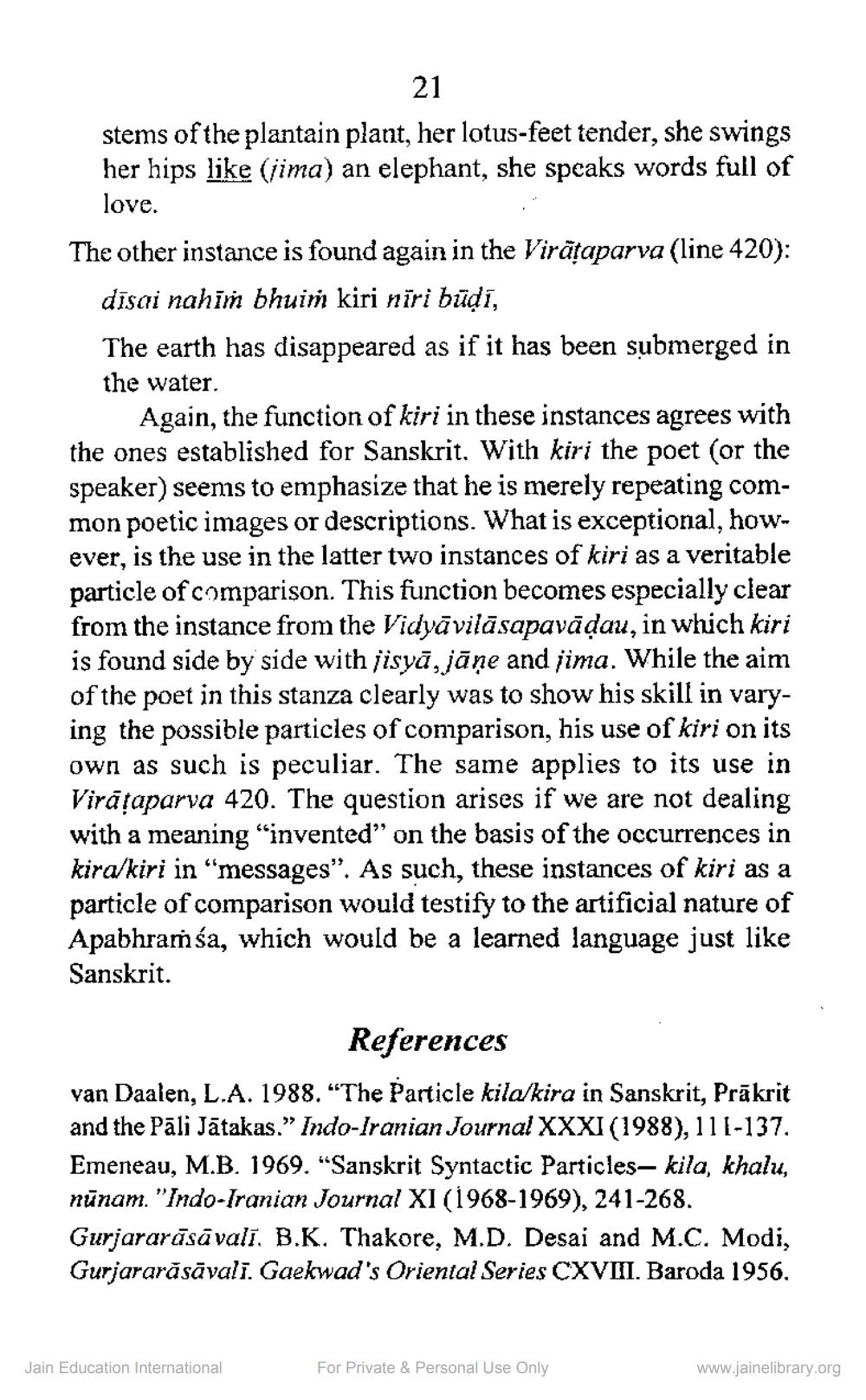Book Title: Two Peculiar Usages of Particle Kira Kiri in Apbhramsa Author(s): Hermen Tieken Publisher: ZZ_Anusandhan View full book textPage 4
________________ stems of the plantain plant, her lotus-feet tender, she swings her hips like (jima) an elephant, she spcaks words full of love. The other instance is found again in the Virāsaparva (line 420): disai nahir bhuim kiri niri būdi, The earth has disappeared as if it has been submerged in the water. Again, the function of kiri in these instances agrees with the ones established for Sanskrit. With kiri the poet (or the speaker) seems to emphasize that he is merely repeating common poetic images or descriptions. What is exceptional, however, is the use in the latter two instances of kiri as a veritable particle of comparison. This function becomes especially clear from the instance from the Vidyāvilāsapavādau, in which kiri is found side by side with jisyā, jāņe and jima. While the aim of the poet in this stanza clearly was to show his skill in varying the possible particles of comparison, his use of kiri on its own as such is peculiar. The same applies to its use in Virataparva 420. The question arises if we are not dealing with a meaning "invented” on the basis of the occurrences in kira/kiri in "messages”. As such, these instances of kiri as a particle of comparison would testify to the artificial nature of Apabhramśa, which would be a learned language just like Sanskrit. References van Daalen, L.A. 1988. "The Particle kila/kira in Sanskrit, Prākrit and the Pāli Jātakas." Indo-Iranian Journal XXXI (1988), 111-137. Emeneau, M.B. 1969. "Sanskrit Syntactic Particles, kila, Khalu, nūnam. "Indo-Iranian Journal XI (1968-1969), 241-268. Gurjararāsāvali, B.K. Thakore, M.D. Desai and M.C. Modi, Gurjararāsāvali. Gaekwad's Oriental Series CXVIII. Baroda 1956. Jain Education International For Private & Personal Use Only www.jainelibrary.orgPage Navigation
1 2 3 4 5
